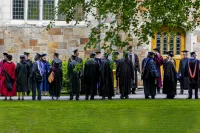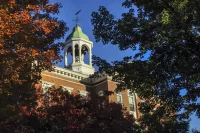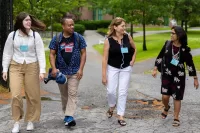
When Adriana Salerno won her biggest award to date, from the the Mathematical Association of America, the Bates professor had two unusual responses to what amounts to a lifetime achievement award.
Her first was, “Wait, I’m not finished” — a thought that Salerno, a professor of mathematics at Bates since 2009, spoke to directly as she accepted one of the MAA’s highest awards at its annual MathFest in August.
“A really important part of being a math professor is that you know you don’t know everything and that you still have a lot to know and to learn and to grow,” she told the audience. “And so getting an award, this is always like, but why? I’ll be better later.”
The second thought was that an individual award didn’t feel quite right. Speaking from Washington, D.C., where Salerno, is now serving as a temporary program director at the National Science Foundation during a leave from Bates, she explained that everything she does is in community, with her students and with her colleagues at Bates and beyond.
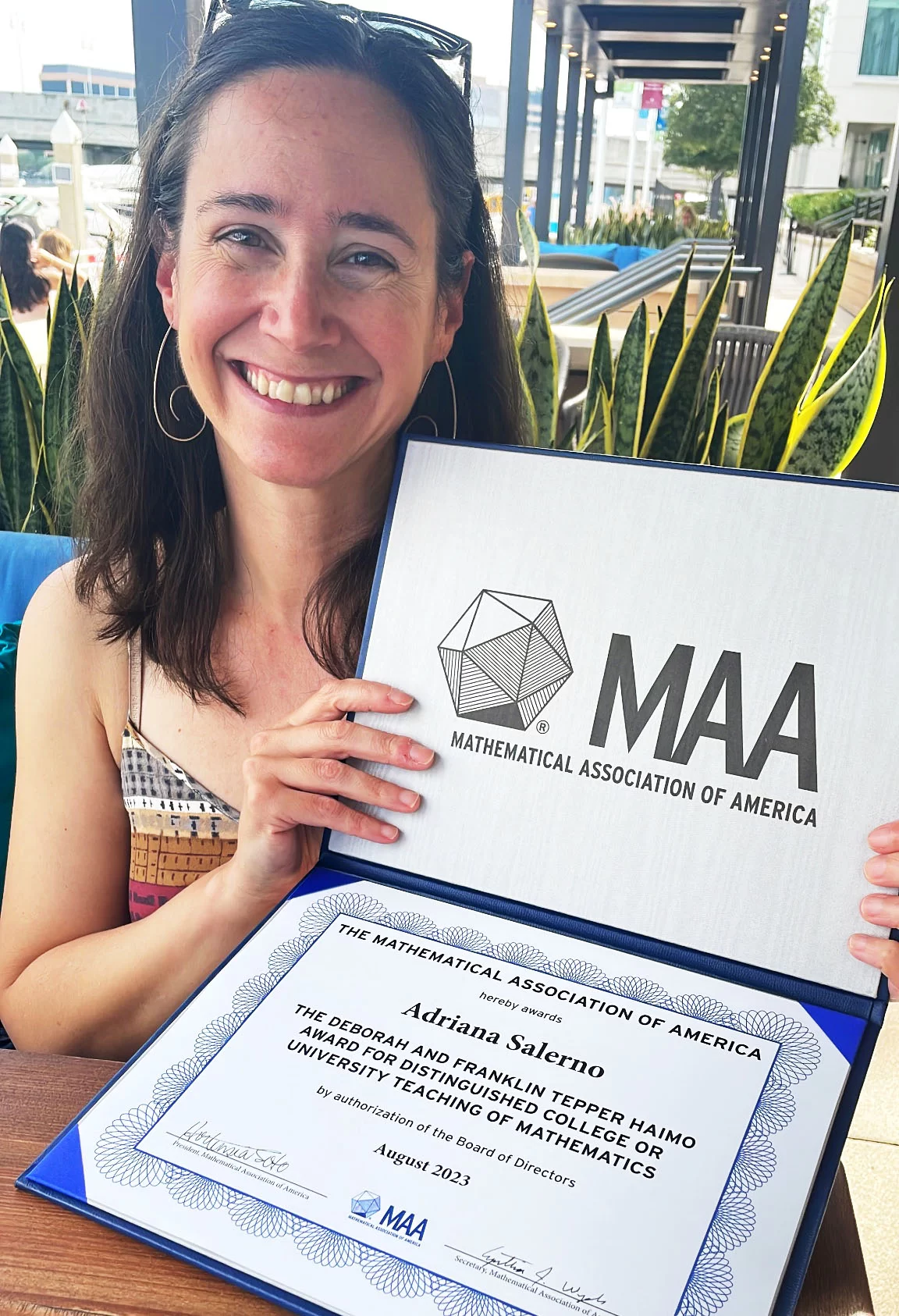
“The other thing that’s weird about getting an award is that I feel like it’s a community activity, teaching. Your students are thought partners, and so are your colleagues. I rely on so many other people and I’ve learned so much from other people.
“So what I feel about this award is it’s not just an award for me, but for me and my network and my community and my students.”
Salerno is one of three college professors nationwide to receive a Deborah and Franklin Tepper Haimo Award for Distinguished Teaching of Mathematics, described by the MAA, the world’s largest community of mathematicians and students, as one of its highest awards.
“Adriana innovated from the start. Along the way, she devoted herself toward building math communities at Bates and beyond.”
Professor of Mathematics Meredith Greer
The award honors professors who are widely recognized as extraordinarily successful and whose teaching effectiveness has been shown to have had influence beyond their own institutions, which is how Salerno’s colleagues characterize her work: challenging teaching norms, working with the surrounding community, and serving as a faculty leader in efforts toward greater inclusion, diversity, and equity.
“Adriana innovated from the start, and she put tremendous resources into figuring out how to make her ideas work,” said Professor of Mathematics Meredith Greer, who joined the Bates faculty in 2002.
“Along the way, she devoted herself toward building math communities at Bates and beyond. She is a champion for the success of every student, and her influence has led to changes at levels from Bates to nationwide to international. Her students say they feel included and respected, and that they have valuable things to contribute in her classes.”
Introducing Salerno as she accepted her award, MAA President Hortensia Soto of Colorado State University remarked on Salerno’s “tireless” work to create an inclusive classroom for her students and an inclusive community for all mathematicians.
Soto noted that Salerno co-founded and was the first editor of a blog for the American Mathematical Society that “played an important role in getting the mathematics community to critically examine its practices.”
Salerno’s acceptance speech at the awards ceremony was titled “Teaching Math Is Hard,” a reference to the teaching statement she came up with 15 years ago, which started with the words “math is hard.”
Salerno’s remarks in accepting her Haimo award starts at the 23:45 mark:
That still holds true, along with the proviso that it is also worth learning. That thesis for her teaching career was inspired by the writings of Rainer Maria Rilke in “Letters to a Young Poet,” which Salerno had received as a gift from her older sister when she was 15.
“I still go back to it every once in a while. This is from the letter that he writes on love, and in that he says that difficult things are usually also really meaningful things and vice versa, that really meaningful things are hard by nature. And so this was my thesis and my teaching statement was, ‘Math is hard but it is worth the effort.’”
She shared stories from her Bates courses, like the way she approached a type of course known as “Preparation for Industrial Careers.” Her goal was to engage students in applied mathematics, “but in a way that is very clearly going to be helpful to them in the workplace.”
In the course, she paired her students with local nonprofits. “The students got problems from the nonprofits and they had to figure out how to answer those questions. It was very messy. One of my students said, ‘This is a great class, but mostly I was cleaning data,’ and I’m like, this might be what you end up doing for work anyway, cleaning data sets.
“It was a really, really fun class to teach in the sense that this is mathematics that is relevant to their employment later on. This is math in the use of their future.”
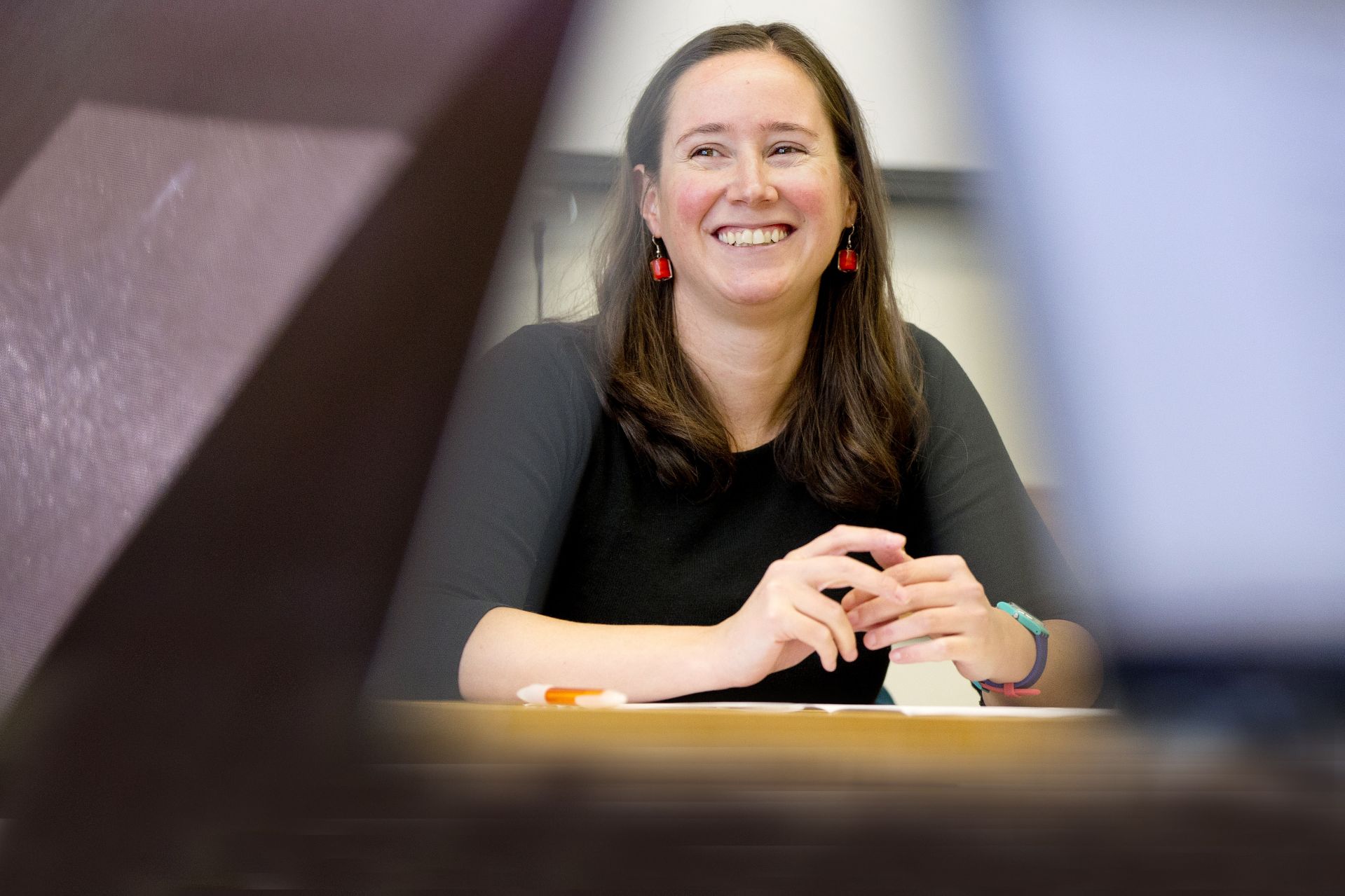
For Salerno, the question of how mathematics can be used to make a better world is never far from her mind. Mathematics, she believes, can and should be for the public good. In her acceptance speech, Salerno told the audience about the course she and Bates colleague Katy Ott developed around the concept of math for social justice, inspired by earlier course-design work of Professor Emerita of Mathematics Bonnie Schulman.
“The students are responding so well to it because they’re just desperate for ways in which to connect mathematics to the world,” said Salerno. In fact, Shulman is coming out of retirement to teach the course again this winter.
Salerno is completing the final year of a three-year position as an NSF temporary program director, known as a “rotator” position, in the Visiting Scientist, Engineer and Education Program. Temporary directors serve as mentors, make funding recommendations, and influence new directions in research and teaching.
At the NSF, she’s on the team that oversees the Research Experiences for Undergraduates Program, which supports active research participation by undergraduate students in any of the areas of research funded by the NSF.
“I’ve been trying to get on the stuff that relates to my experiences,” Salerno says. “So I’ve been trying to carve out some space for not just research, but the liberal art part, as well.”
